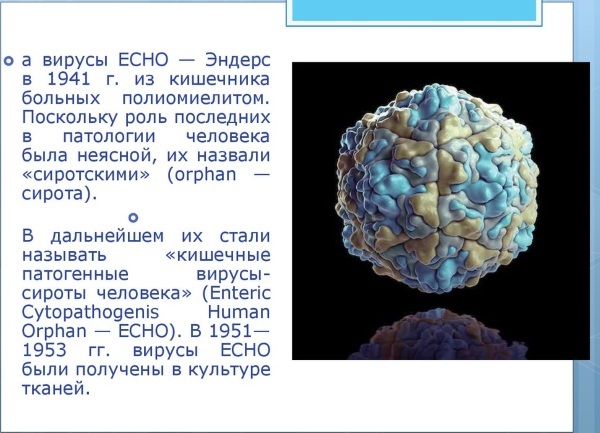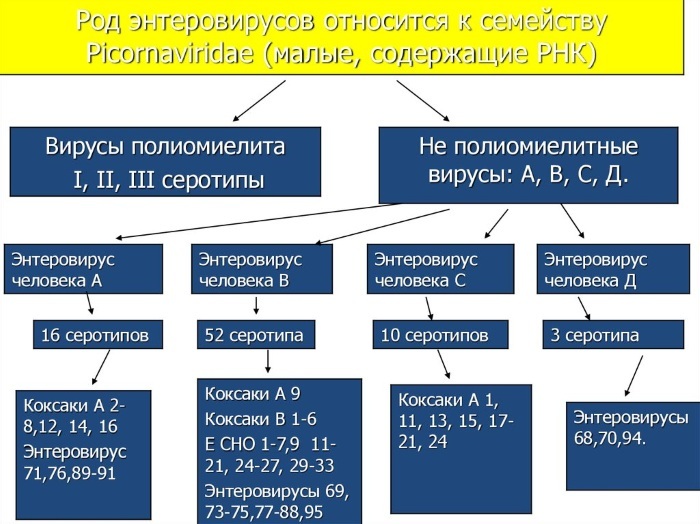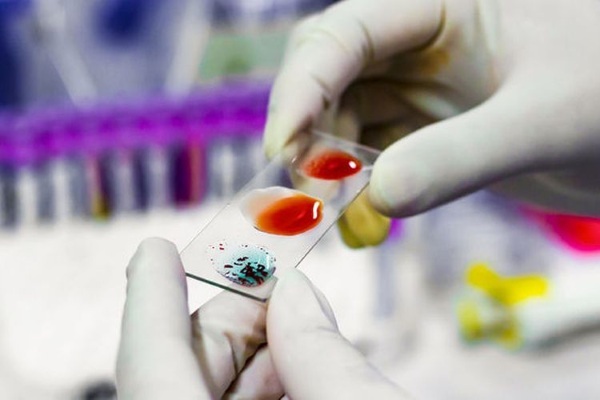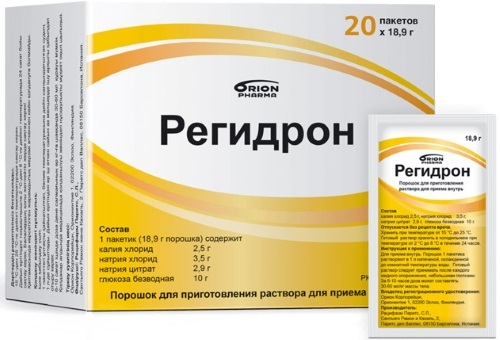Enterovirus infection - This is a number of diseases of the digestive tract, which are caused by microorganisms from the genus Enterovirus. Diseases provoked by the pathogenic microflora of this type are always acute, accompanied by intense symptoms and complications.
Enteroviruses are RNA-containing microorganisms that quickly adapt to new environmental conditions and have the ability to mutate under the influence of unfavorable factors.
The average duration of the incubation period for enterovirus infection is 2 to 7 days. During this time, a person is a carrier of pathogens, infecting people around him.
Enteroviruses are dangerous not only with a very short incubation period, but also with extremely acute and unpredictable symptoms. In most cases, diseases provoked by these microorganisms occur in a moderate clinical picture without significant damage to human health.
At the same time, in the case of infection of the body with viral strains that affect the central nervous system, an acute inflammatory process of the membranes of the brain develops.
Periodically, there are cases when an enterovirus infection affects the tissues of the heart muscle, reducing the functional activity of this organ. Depending on the severity of the pathology, the painful state of the body can last from several days to 3 weeks.
Diseases caused by enteroviruses arise as epidemiological outbreaks. The peak of the activity of these microorganisms falls in the summer and autumn seasons, when the weather is warm enough outside.
The human body is extremely susceptible to almost all strains of enterovirus infection, but after suffering diseases, most people develop type-specific immunity, which persists for several years old. Then re-infection with these microorganisms is not excluded with the appearance of the corresponding symptoms.
After entering the human digestive system, enteroviruses can provoke damage to any vital organ, or the pathology will be limited to a short-term gastrointestinal disorder.
Record content:
-
1 Views
- 1.1 ECHO viruses
- 1.2 Coxsackie viruses (genotypes A and B are the most common)
- 1.3 Poliovirus
- 1.4 Unclassified enteroviruses
-
2 Stages and degrees
- 2.1 Incubation stage
- 2.2 Stage of manifestation
- 2.3 Extinction stage
- 3 Symptoms and Signs
- 4 Causes
-
5 Diagnostics
- 5.1 Immunochemical blood test
- 5.2 Serological diagnostics
- 5.3 Molecular biological method
- 5.4 Virological research
-
6 Treatment methods
- 6.1 Regidron
- 6.2 Activated carbon
- 6.3 Glucose solution
- 6.4 Interferon therapy
- 7 Possible consequences and complications
- 8 Enterovirus video
Views
Enterovirus, the incubation period of which does not exceed 1 week, has a large number of genotypes. Currently, scientists have studied about 100 strains that belong to this group of microorganisms.
Representatives of enterovirus infection are ubiquitous in the environment, characterized by increased resistance to ultraviolet radiation and drugs with antiseptic properties.
ECHO viruses
ECHO viruses are pathogenic biohazardous agents that cause fever in young children. Echoviruses can provoke not only a disorder of the functions of the digestive system, but also lead to the development of aseptic meningitis.
Diseases caused by these microorganisms can cause sudden death in newborns.
 This is especially true for infants who are at the stage of early neonatal development. A distinctive feature of ECHO viruses is that in most cases they infect the organisms of children and men. In this case, this type of infection affects the meninges, organs of the cardiovascular and digestive systems.
This is especially true for infants who are at the stage of early neonatal development. A distinctive feature of ECHO viruses is that in most cases they infect the organisms of children and men. In this case, this type of infection affects the meninges, organs of the cardiovascular and digestive systems.
Coxsackie viruses (genotypes A and B are the most common)
Coxsackie viruses, which are represented by genotypes A and B, are characterized by active reproduction after penetration into the organs of the human gastrointestinal tract. Pathogenic microorganisms of this type provoke signs of a severe disorder of the digestive system, in addition to which the patient develops aseptic meningitis.
The disease can spread to the skin surface of the body, mucous membranes become infected, and acute hemorrhagic conjunctivitis develops.
As the pathology progresses, the patient shows signs of infection of the heart muscle, pleura, pancreatic tissue and liver. Due to the large number of different symptoms of a painful state of the body, a doctor with insufficient practical experience can be difficult to carry out differential diagnosis with the definition of Coxsackie viruses genotype A and B.
The spread of pathogenic microorganisms of this type occurs through household items, handshakes, while talking with the carrier of the virus.
Poliovirus
Polioviruses also belong to the enterovirus family. Microorganisms of this type cause the development of poliomyelitis with further dysfunction of the central nervous system, as well as damage to peripheral nerves.
Polioviruses are considered one of the most dangerous infections. Once in the child's body, representatives of the pathogenic microflora of this species cause irreversible changes in the structure of the nerve endings responsible for the innervation of muscle tissues.
As a result of this process, sick children acquire lifelong disability caused by immobility of the lower extremities, paralysis of other elements of the musculoskeletal system. The only way to protect the body from poliovirus is to routinely immunize the body using the vaccination method.
Unclassified enteroviruses
Viral microorganisms of this type are isolated into a separate subspecies, since their biological characteristics, as well as the symptoms that they cause after entering the human gastrointestinal tract, are the same.
In most cases, unclassified enteroviruses provoke acute intestinal distress and accompanying signs of gastric dysfunction. Complicated forms of the disease can lead to infectious damage to other internal organs and life support systems of the body.
Stages and degrees
Enterovirus, the incubation period of which is quite short, has 3 main stages of its development.
Incubation stage
This stage is the initial period in the development of a disease state of the body. After an enterovirus infection enters the human gastrointestinal tract, a systematic increase in the numerical population of pathogens occurs. After 2-7 days from the moment of viral invasion, the first signs of infection appear.
Stage of manifestation
At this stage of the development of the disease, which is provoked by an enterovirus infection, acute symptoms appear. The clinical manifestations of the disease depend on the genotype of the pathogenic microorganism, the patient's age, and the state of his immune system.
In most cases, the duration of this stage does not exceed 7 days. During this period of time, a person may persist with acute symptoms.
Extinction stage
After 1 week, the patient shows signs of a gradual decrease in the severity of painful symptoms. The digestive function of the gastrointestinal tract is normalized, appetite returns, and heat exchange of the body is stabilized.
These signs indicate that the human immune system has developed the required amount of antibodies that are able to resist the causative agents of enterovirus infection. For several years, the patient will retain a stable immunity to this genotype of pathogenic microorganisms.
Symptoms and Signs
Enterovirus, the incubation period of which ends in the first 7 days from the moment of infection, manifests itself with acute and dynamically developing symptoms.
There are the following main signs of a painful state of the body caused by this type of infection:
- a sharp increase in body temperature, which is in the range of 39-40 degrees;
- general weakness appears;
- Strong headache;
- inflammation of the intestinal mucosa;
- nausea;
- diarrhea with repeated bowel movements;
- discharge of vomit;
- cramping pain inside the abdomen;
- loss of appetite and complete refusal to eat.

This clinical picture is typical for the pathogenic activity of enteroviral microorganisms that affect the mucous membrane of the digestive system. In case of infection with Coxsackie viruses, as well as other genotypes that can affect the central nervous system, in addition to the above, the child has the following symptoms:
- inflammation of the meninges;
- photophobia;
- cramps of the lower extremities;
- general intoxication of the body;
- increased psycho-emotional arousal;
- small red rash, localized on all areas of the skin;
- stiffness of muscle tissue located in the back of the head;
- epileptic seizures.
The presence of such a clinical picture indicates that the child's body is affected by an enterovirus infection, which provokes the development of viral serous meningitis. The average duration of this disease is 4 to 7 days. Dysfunctional gastrointestinal symptoms may persist for up to 2 weeks.
In medical practice, there are cases when adults and children infected with enterovirus strain D68 suffer from acute obstructive processes in the tissues of the lungs and bronchial tree. This indicates the degree of pathogenicity of enterovirus infection for the human body.
Causes
The following main factors are distinguished, the influence of which leads to the spread of enterovirus infection with infection of more and more adults and children of all age groups:

| poor hygiene | when pathogens enter the digestive tract through dirty hands |
| airborne transmission | if enterovirus virions are present in the saliva of an infected person |
| infection of a newborn baby from an infected mother | when the penetration of enterovirus infection into the baby's body occurs at the time of its passage through the birth canal |
| eating dirty vegetables and fruits | who have not been properly sanitized and hygienic |
| swimming in open water | in the composition of the water of which there is an excessive amount of virions of enterovirus infection |
It is also possible that pathogenic microorganisms can be contaminated with household items or surfaces in public places;
Enteroviruses are widespread in the environment. There are many ways this infection is transmitted. Cases were repeatedly recorded when people became infected with these microorganisms through the water that was in the coolers. Failure to comply with basic rules of hygiene and sanitation is the main prerequisite for the spread of this infection.
Diagnostics
Patients admitted to the hospital with signs of infection with an enterovirus infection undergo a comprehensive examination of the body using methods of laboratory and instrumental diagnostics.
Immunochemical blood test
In this case, a study of the patient's venous blood is performed, during which specific antigens are released, which are present in patients infected with enterovirus infection.  To carry out this type of diagnosis, you will need to donate about 5 ml of blood from the cubital vein. The average cost of an examination is 3,500 rubles.
To carry out this type of diagnosis, you will need to donate about 5 ml of blood from the cubital vein. The average cost of an examination is 3,500 rubles.
Serological diagnostics
Serological examination of venous blood enables doctors to determine the presence of enterovirus virions by the presence of special markers, immunoglobulins. Performing this type of examination requires donating blood from a vein, and its average cost is within 800 rubles.
Molecular biological method
This type of diagnostic examination allows you to detect RNA fragments of pathogenic microorganisms, which are characteristic of representatives of enterovirus infection. To carry out this research method, you will need to donate venous blood in an amount of no more than 5 ml. The average cost of a molecular biological diagnostic method is 625 rubles.
Virological research
This diagnostic method provides for the isolation of specific strains of enterovirus in the patient's biological fluids. Saliva, feces, the contents of washes and smears collected from the surface of the oral mucosa are used as biological material. The cost of this type of examination is 590 rubles.
Based on the results of a general blood test, the patient has the following clinical picture:
- hyperleukocytosis;
- as the disease progresses, lymphocytosis and eosinophilia increase;
- neutrophilia, which is noted in the early stages of the development of the disease.
Depending on which organs and systems of the body are affected by enterovirus infection, it may be necessary ultrasound of the liver, electrocardiogram, gastroscopy, endoscopic examination of organs Gastrointestinal tract.
Treatment methods
Treatment of enterovirus infection involves the use of supportive therapy aimed at relieving current symptoms of the disease. The actions of medical personnel are aimed at preventing dehydration of the patient's body, as well as eliminating the effect of general intoxication.
Regidron
The contents of 1 sachet of the drug Regidron are dissolved in 1 liter of boiled water at room temperature. The patient drinks the received drug completely or divides it into metered portions.
This drug is used to maintain a stable water and electrolyte balance, which is disturbed by prolonged diarrhea and vomiting. The dosage of Rehydron is determined individually by the attending physician, depending on how much fluid has been lost by the patient.
Activated carbon
Activated carbon is taken to eliminate signs of general intoxication. The dosage regimen for this drug is 0.1-0.2 g of medication per 1 kg of patient weight. This amount of the drug is taken 3 times a day, 1 hour before or after meals. The course of therapy lasts from 3 days to 2 weeks.
Glucose solution
To maintain the energy balance, to prevent depletion of the patient's body, a glucose solution of 5% concentration is prescribed. The patient takes this drug orally, or receives it in the form of intramuscular infusion. The dosage regimen and timing of therapy are determined by the doctor based on the general condition of the patient.
Interferon therapy
In order to increase the resistance of the patient's body to the pathogenic activity of enterovirus infection, a method of strengthening the immune system using leukocyte interferon is used. The therapeutic solution is administered intranasally throughout the course of therapy, which was established by the attending physician.
Possible consequences and complications
Enterovirus infection, which is severe in a person with a severely weakened immune system, can provoke the development of the following complications:
- serous lesion of the membranes of the brain;
- acute paralysis of the lower extremities;
- septic shock with a further onset of death (this complication is often found in newborns);
- inflammation of the liver tissue;
- kidney damage;
- inflammatory processes in the pericardial sac.
Enterovirus infection is a fairly common disease characterized by an acute form of the course and progressive development. The stage of the incubation period of pathogenic microorganisms of this type lasts from 2 to 7 days.
After this, the period of manifestation of the disease begins with the manifestation of vivid symptoms, which is expressed in the form of headache, diarrhea, nausea and vomiting.
The duration of the preservation of the painful state of the body ranges from several days to 2-3 weeks. At risk of contracting an enterovirus infection are people who ignore the basic rules of hygiene and sanitation.
Enterovirus video
About enterovirus infection:



